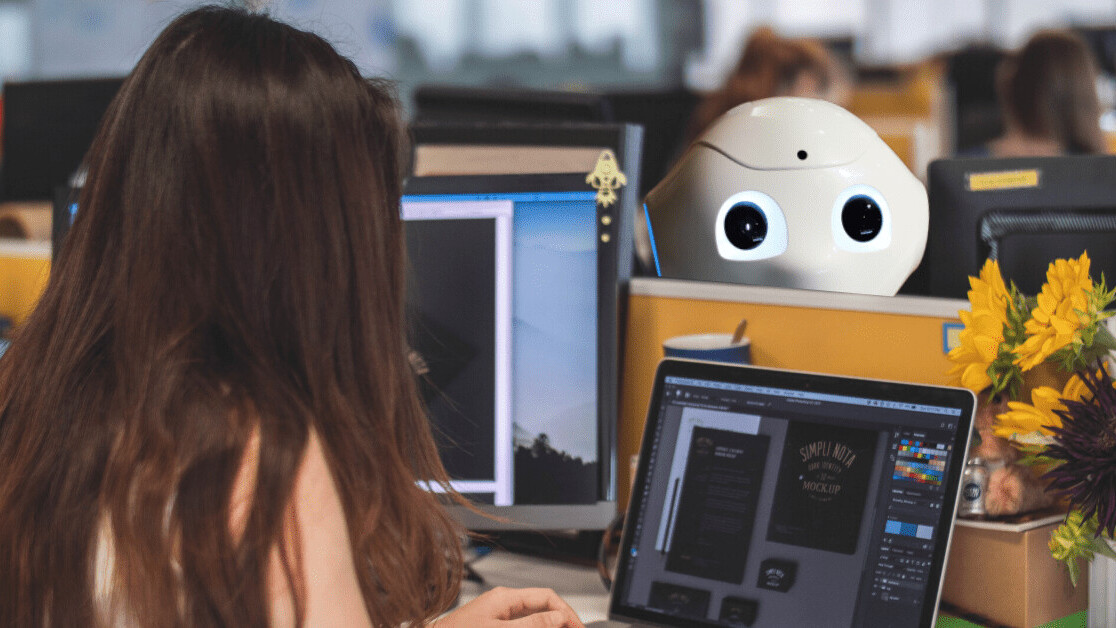
Design is an ever-evolving field. So much so that it’s hard to keep track of design job titles. Originally, product designers designed industrial products while graphic designers focused on print as a medium.
As a creative field, Design found its Analogy with architecture; it was required to be functional, usable, and predictable, while also being beautiful, emotional, and novel. Designers considered business priorities, user needs, and material constraints amongst other factors, and designed the solutions. These factors (or requirements) remained constant while the designers channeled their creativity to come up with innovative and perfectionist solutions for the target market.
The present: Create for the personas
In the digital world, Design borrowed tenets from the previous era but with one fundamental difference: the solution became a living entity. The digital “Product” of today constantly learns about the user’s understanding of itself and evolves as it learns. The requirement comes in batches and continuously builds on top of the existing solution.
Markers in the product give a quantitative assessment of the user’s behavior; We track metrics such as number of sessions, frequency of sessions, time of the day when sessions happen, activation through notification vs organic, session duration, most used buttons (or features), click order per screen, time spent per screen, scrolls per screen, number of list items consumed per screen, etc. A measure of each metric highlights high-level patterns and preferences of the users. I personally prefer percentile (80th) over averages to eliminate outliers. Eg: A “clickstream” visualization here shows patterns for user clicks in a session, we also used a similar visualization for “timestream” which showed time spent patterns in a session.
Now, in a data-informed environment, these numbers drive product and design decisions and experiments. These numbers impact product, product impacts user behavior, user behavior impacts the numbers, and hence product evolution is an ongoing exercise always.
Since we identify high-level patterns through these metrics, we are essentially designing for Personas. For example, if many of the users come online after 10 pm regularly, we will notice that behavior will probably include a night-mode feature. These users will likely be teenagers (hypothetically), so we are designing for the teenage persona in this case.
Also, even before starting to design a product, our ethnographic studies focus on bucketing users in personas. Hence, both our qualitative and quantitative indicators of the day help us in designing for these Personas.
The Future: Create for the individuals
You must have had some magical experiences with a product. Some feature, some text, or some graphic which really made you feel like the product really got you. I remember Google Home picked out the top 10 restaurants in my area for my anniversary. And Cleartrip highlighted a local holiday for me while making a flight booking for the said date.
What if magical experiences were a norm?
Personalization in content is ubiquitous these days. Netflix, TikTok, Instagram (discover), Youtube, Facebook, LinkedIn, and all the spooky internet ads are examples of content based on personalized interests. But now, we’re on the verge of elevating it to the product itself. For example, with respect to visual design, here’s an AI churning out a whopping 400 million visual design permutations.
Design’s objective has always been about designing for users a.k.a User-Centric-Design. Techniques such as ethnographic studies, customer journey maps, validation exercises, surveys, product metrics, etc are all measures to understand the user better. However, the qualitative ones do not scale and the quantitative ones enable patterns at average (or percentile) level and not individuals.
Metaphorize AI as a childhood friend, one who understands you, and grows old with you.
In an AI-powered world, we can scale Empathy. We can understand individuals amongst data and truly design User-Centered solutions.
How AI changes things:
- Understand individuals at scale: AI empowers data analysts with better and deeper insights. We are able to understand more complex data and at a more micro level. We can profile users more accurately based on demonstrated behavior. Instead of focussing on users as a % of metrics (or funnel), we can reliably analyze overlapping journeys (click-flows) across the product.
- Identify opportunities: AI also transforms the field from being reinforcing tool i.e. answering what is being asked, to being a generative one i.e. highlighting the patterns and aberrations itself. Think of it as conducting ethnographic research instead of a feedback survey, the former is more prone to identifying new ideas and open new possibilities.
- Predict and personalize features: As we better understand and match user journeys at scale, we can predict user behavior and accordingly prioritize features. This is similar to how we personalize a content feed like Netflix. For example, users that are predicted to transact might see cart as the main feature of a product and users that are predicted to engage might see content/community as a prioritized feature.
- Optimize permutations: For features that are fed to the users, experimentation with flows will become automated. For example, if we have a checkout flow, say we have the option to use a single-screen long-form, or step-by-step full-screen flow, or a bottom-sheet flow; experimenting and matching the options to user profiles will be easier.
- New interfaces: AI will enable newer ways to interact with users. At present, conversational interfaces such as voice assistants and chatbots are the best examples.
How designers can adapt:
- Think at systems-level: Only data cannot do the job, interpreting it in the context of the user’s environment makes it relevant for the users. Think at the systems level and identify the core problems. Recent design titles such as systems designer and customer experience designer already reflect this change.
- Design the architecture: Imagine each user having their own version of a product but it’s still the same product at its core. For example, “stories” as a product is architecturally the same for WhatsApp, Facebook, Snapchat and Insta. Though it varies in detail on various platforms, it’s unlike other content entities such as a post, a message or a movie. Focus on designing the architecture that suits the product flexibility will be key to a designer’s success.
- Design language system with flows: We have evolved from visual-style guides to design language systems. While the former focuses on creating options for visual artifacts the later focusses on creating UX components (and coding them as well). In the coming times, we should further include options for end-to-end flows as well in design systems. For example, a search flow can start with typing in one option, listing in another. AI can help us pick an option as per user profile and fit it in the architecture defined earlier.
- Design for delight: The better we understand user profile, the easier it will be to match delightful features to the users. In the ideation phase, it will be good to understand user personas and journey maps deeply and then come up with myopic but delightful solutions. AI can help us scale the same as we become more personalized with features.
- Integration with tech: a deeper understanding of tech and product analytics will be required to fully use tech capabilities and to analyze the infinite live permutations of a product correctly. Designers will gain by acquiring skills in coding and instrumentation.
- Set the ethics: Think of AI as a person, it can be a good one or a bad one. At present, there are enough examples of dark UX in present-day, none more infamous than Privacy-Zuckering. AI is more susceptible to exploitation than any other tech. It is up to us to set the personality and the ethics for the system. Digital trust will be a primary driver for retaining new users, especially in emerging markets. It is our responsibility, as owners of the experience, to keep it as transparent, honest and predictable as possible. Trust, once broken, cannot be regained. Design for long-term relationships, not for short-term gains.
Data will always be reactive, and (ethnographic) research will always be proactive. Use research to innovate and data to amplify.
Can AI replace designers? I believe, as long as humans are the users, we will need the human dimension on the creation side as well. As mentioned at the start, design is an evolving field, and it is quite stubborn at coming up with creative ways to keep itself relevant. Maybe we can expect a new title soon: AIXD!
This article was originally published on UX Collection by Sumit Dager, a design leader, and entrepreneur. Dager helps to grow startups transition into a stable product and an innovation culture. He’s interested in creating consumer products for emerging markets and accessible innovations for disabled users.
Get the TNW newsletter
Get the most important tech news in your inbox each week.







